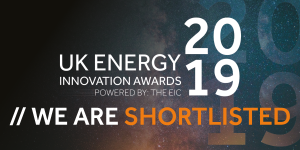The SAVE Project
We have recently completed our final research report for Ofgem on the SAVE Community Energy Coaching trial.
Working with Scottish and Southern Electricity Networks (SSEN) and other partners, we have been leading research to explore the scope for behaviour change amongst customers leading to predictable peak demand reduction as an alternative to automatic network reinforcement. So at the community level, the need for investment by the Network Operator in substation capacity to keep pace with growing demand, can be reduced or planned for more effectively. Lower investment costs will ultimately mean lower bills for customers.
The research was conducted in two pilot communities in Southampton and Winchester. Working intensively through 2016 and 2017, the research trial tested a non-traditional coaching approach to engagement using a combination of ‘top down’ and ‘bottom up’ techniques.
Summary of our Key Findings:
_________________________________________________________ _________________________________________________________Attributable demand reduction in excess of 10% on selected substation feeders provides a benchmark for what can be achieved through focused community engagement
The unifying force for behaviour change within both communities was not about saving money, not about saving the planet … but the idea of being part of a caring, connected community
In both areas, the essence of the coaching approach came to be characterised as ‘making emotional connections’ … between residents, with service agencies and with wider social and environmental concerns
Addressing the issue of ‘Energy Literacy’ was essential … once customers appreciated the significance of peak demand (4-8pm), the novel ‘shift’ message became compelling
The principle of working initially with the communities unconditionally on their own terms – helping to create and deliver the locally branded community strategies – was perceived positively as the Network Operator ‘Earning the Right’ to present its own energy agenda
Messenger identity is key - 20% of households at most responded positively to a direct invitation from the Network Operator to get involved in the project, compared to over 50% in both pilot areas when invited to take energy saving actions through the locally branded organisations. Developing trusted local brands was key to promoting behaviour change and engaging on a one-to-many basis rather than the more typical one-to-one
Stakeholder partners including other utilities and local councils, have been impressed by the collaborative, co-design approach of the project and the wide range of social impacts achieved (in addition to peak demand reduction) and have committed to maintaining the legacy of the project by using this approach in other community based initiatives. For SSEN, the principle of stackable benefits underpins the current Social Constraint Managed Zone (SCMZ) initiative
Food played an important role in drawing people into conversations about energy, whilst focussing on saving time, as well as energy, helped to break down the barriers to changing established cooking routines
In both communities the impact of the project has been seen as transformational with a wide range of positive social impacts being delivered alongside the energy message. Residents are keen to maintain these benefits and have committed to continuing to use the local branding developed through the project to do this
Download the full report:
SAVE-Community Coaching Final Report-June18
Final Appendices-June18
The Post-Trial Legacy – ‘One Year On’ Review
“The stakeholder work carried out by Neighbourhood Economics has facilitated cross-industry understanding of how utilities and local authorities might share agendas, fieldwork and customer relationship management. Next steps should look to understand how the spatial focus of a Network Operator could interact with these third parties to share costs and benefits of a given initiative. From a consumer perspective as well, communities have noted how this joined up messaging relays more succinctly than multiple overlapping streams of messaging. Future discussions must look at how this process could be fairly commercialised and implemented at scale” (Charlie Edwards, Project Manager, Scottish and Southern Electricity Networks)

